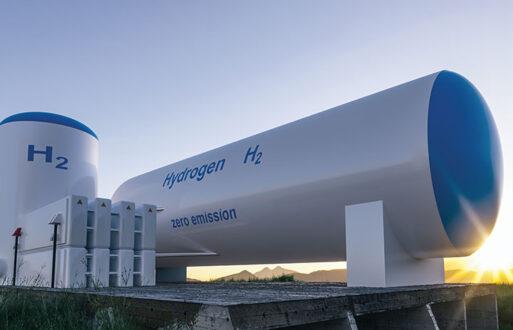Disclaimer: This blog post, which answers “How do FERC and NERC differ in their roles in U.S. electricity markets?,” was generated using PCI’s ISO/RTO Documentation AI Chatbot, powered by ChatGPT. While the content is based on curated market documentation, it is intended for informational purposes only and may not reflect the most up-to-date or comprehensive information. We recommend verifying any key details directly with relevant sources before making business decisions.
For the latest answer to this question, generated live, visit our free ISO/RTO Documentation Chatbot.
The U.S. electricity market is a complex web of regulations, reliability standards, and market operations. At the heart of this system are two key organizations: the Federal Energy Regulatory Commission (FERC) and the North American Electric Reliability Corporation (NERC). While they both play critical roles in ensuring the smooth functioning of electricity markets, their responsibilities and focus areas differ significantly. Understanding these differences is essential for market participants, ISOs/RTOs, and anyone navigating the energy landscape.
In this blog post, we’ll explore the distinct roles of FERC and NERC, how they interact with ISOs/RTOs and market participants, and provide real-world examples of their impact. By the end, you’ll have a clear picture of how these organizations work together to maintain a reliable and fair electricity market.
ISO/RTO Documentation Chatbot
Use our AI to search Business Practice Manuals from ISO/RTO markets at no cost.
FERC’s role: Regulating market rules and tariffs
FERC, established in 1977, is a federal agency that oversees the interstate transmission of electricity, natural gas, and oil. Its primary focus is on ensuring that electricity markets operate fairly and efficiently. FERC’s authority extends to approving tariffs, market rules, and rates proposed by ISOs/RTOs, as well as investigating market manipulation and enforcing penalties for violations.
For example, FERC’s landmark Order 888 in 1996 required utilities to provide open access to their transmission networks, fostering competition in wholesale electricity markets. Similarly, FERC Order 2000 encouraged the formation of ISOs and RTOs to manage regional grids and ensure non-discriminatory access to transmission services. These orders laid the foundation for today’s competitive electricity markets.
FERC also plays a critical role in approving market designs proposed by ISOs/RTOs. For instance, when PJM or CAISO proposes changes to their capacity market rules or energy pricing mechanisms, FERC evaluates these proposals to ensure they align with federal regulations and promote market efficiency.
NERC’s role: Enforcing reliability standards
While FERC focuses on market regulation, NERC is all about reliability. Designated as the Electric Reliability Organization (ERO) by FERC in 2006, NERC develops and enforces reliability standards for the bulk power system. These standards are designed to prevent blackouts, ensure grid stability, and maintain the integrity of the electricity supply.
NERC’s responsibilities include monitoring compliance with reliability standards, conducting audits, and imposing penalties for violations. For example, after the 2003 Northeast blackout, NERC introduced stricter standards for vegetation management near transmission lines to prevent similar incidents.
NERC works closely with Regional Entities, such as the Northeast Power Coordinating Council (NPCC) and the Western Electricity Coordinating Council (WECC), to implement and enforce these standards. ISOs/RTOs, like NYISO and MISO, must comply with NERC’s standards to ensure their grids operate reliably.
How FERC and NERC interact with ISOs/RTOs and market participants
FERC and NERC often collaborate to ensure the electricity market operates smoothly and reliably. ISOs/RTOs serve as the bridge between these organizations and market participants, implementing FERC-approved market rules while adhering to NERC’s reliability standards.
For instance, NYISO must comply with NERC’s reliability standards while also following FERC-approved tariffs and market rules. This dual compliance ensures that the grid remains stable and market operations are fair. Market participants, such as generators and transmission owners, are also subject to both FERC’s regulations and NERC’s standards, creating a comprehensive framework for accountability.
Real-world examples of FERC and NERC in action
To illustrate their roles, let’s look at two real-world scenarios:
FERC’s market regulation: In 2020, FERC approved PJM’s proposal to implement a new capacity market rule known as the Minimum Offer Price Rule (MOPR). This rule aimed to address concerns about state-subsidized resources potentially distorting market prices. FERC’s approval ensured that the rule aligned with federal regulations and maintained market integrity.
NERC’s reliability enforcement: After the 2021 Texas winter storm, NERC and its regional entity, the Texas Reliability Entity, conducted an investigation into the causes of widespread outages. NERC subsequently introduced stricter winterization standards for generators and transmission operators to prevent similar failures in the future.
Why FERC and NERC are essential to the U.S. electricity market
FERC and NERC play complementary roles in the U.S. electricity market. FERC ensures that market rules and tariffs promote competition and fairness, while NERC enforces reliability standards to maintain grid stability. Together, they create a balanced framework that supports both market efficiency and system reliability.
Understanding their distinct responsibilities and how they interact with ISOs/RTOs and market participants is crucial for navigating the complexities of the energy market. Whether you’re a market participant, policymaker, or energy enthusiast, recognizing the importance of FERC and NERC will help you appreciate the intricate mechanisms that keep the lights on and the markets running smoothly.
For the latest answer to this question, generated live, visit our free ISO/RTO Documentation Chatbot.






